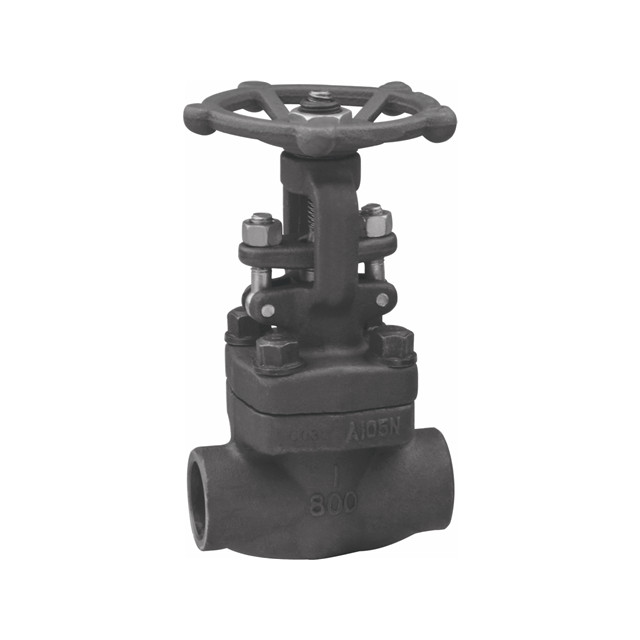สารบัญ
สลับThe differentiation between API 600 and API 602 standards is pivotal when it comes to manufacturing industrial valves.
While both are crucial benchmarks, they address distinct aspects.
API 600 primarily delves into valve design, while API 602 focuses on evaluating valves for low emissions.
Read on to learn more about their distinction, which is essential for you to make an informed decision.
API 602 คืออะไร?
API 602 is the standard specification for Gate, Globe, and ตรวจสอบวาล์ว with sizes DN 100 [NPS 4] or Smaller in the Petroleum and Natural Gas Industries. These valves are intended to withstand extreme pressure or temperature conditions.
API 602 is the standard for 4” and smaller forged steel gate valves used in industrial facilities. This specification outlines the design and construction criteria for these valves, as well as information on extended-body forged valves.
ข้อมูลจำเพาะมีให้ในรูปแบบ ISO ซึ่งครอบคลุมเกณฑ์การออกแบบและวัสดุทั้งหมดสำหรับวาล์วหลอมขนาดเล็ก ประกอบด้วยขนาดที่สำคัญ เช่น เส้นผ่านศูนย์กลางขั้นต่ำของลำต้น ความหนาของผนัง และขนาดกล่องบรรจุ
API 602 เป็นวาล์วขนาดกะทัดรัดและทนทาน ออกแบบมาสำหรับบริการแรงดันสูงและอุณหภูมิสูง ทำจากเหล็กกล้าไร้สนิม คาร์บอน และโลหะผสม ผลิตภัณฑ์นี้พบการใช้งานในอุตสาหกรรมก๊าซธรรมชาติและปิโตรเลียมด้วยพื้นผิวการปิดผนึกมาตรฐานที่ป้องกันการสึกหรอ นอกจากนี้ พื้นที่ซีลก้านที่ขัดเงาช่วยให้มั่นใจได้ถึงความหนาแน่นของอากาศที่เหมาะสมและไม่มีการรั่วไหลของไอเสียที่หลบหนี SIO เป็นผู้จัดจำหน่ายวาล์ว API 602 ทั่วอเมริกาเหนือและยุโรป โดยมีทุกประเภทและขนาดตั้งแต่ 150 ถึง 2500 มม.

API 600 คืออะไร?
API 600 เป็นมาตรฐานของอเมริกาที่ระบุเกณฑ์การออกแบบสำหรับเกทวาล์วเหล็กหล่อ (คาร์บอนและโลหะผสม) ที่ใช้ในอุตสาหกรรมปิโตรเลียม โดยจะระบุขนาดที่สำคัญ เช่น เส้นผ่านศูนย์กลางขั้นต่ำของลำต้น ความหนาของผนัง และขนาดกล่องบรรจุ
วาล์ว API 600 สองประเภทหลักคือประเภทที่เพิ่มขึ้นและประเภทที่ไม่เพิ่มขึ้น เมื่อเปิดแล้ว ก้านชนิดยกขึ้นจะลอยขึ้นเหนือวงล้อ ดังนั้นผู้ควบคุมจึงสามารถบอกได้ว่าวาล์วเปิดหรือปิดอยู่
ก้านที่ยกสูงขึ้นช่วยให้ผู้ควบคุมวาล์วตรวจสอบได้ง่ายว่าที่จับไม่ได้สัมผัสกับน็อตที่ใช้งาน เนื่องจากการรบกวนระหว่างกันอาจนำไปสู่การรั่วไหลหรือขัดขวางการทำงานได้
วัสดุหลักสองชนิดที่สามารถใช้ได้คือเหล็กดัดและสแตนเลส วัสดุทั้งสองมีหลายขนาดและหลายรูปแบบ
แผ่นปิดวาล์วประตู API 600 มีให้เลือกสองแบบ: แบบวงแหวนที่นั่งแยกต่างหากหรือแบบรวมเข้ากับตัววาล์ว ทั้งสองวิธีจะต้องทำจากวัสดุเดียวกันกับตัวเครื่องเพื่อให้เป็นไปตามข้อกำหนด

API 602 เทียบกับ API 600
ความแตกต่างหลักระหว่าง API 602 และ API 600 คือประเภทแรกใช้กับวาล์วประเภทต่างๆ ในขณะที่ประเภทหลังทดสอบความสามารถในการปล่อยมลพิษต่ำของวาล์ว การทดสอบสำหรับแต่ละประเภทจะแตกต่างกันไปตามการออกแบบ อุณหภูมิที่กำหนด และส่วนประกอบการซีล
โดยพื้นฐานแล้ว การทดสอบเหล่านี้ดำเนินการเพื่อแสดงให้เห็นถึงความสามารถในการปล่อยก๊าซต่ำของวาล์วตลอดอายุการใช้งานที่ยาวนานขึ้น เรียกอีกอย่างว่าการทดสอบประเภท ซึ่งนำเสนอวิธีอันล้ำค่าในการตรวจสอบประสิทธิภาพของชุดบรรจุภัณฑ์ต่างๆ
API 602 ระบุถึงเกทวาล์วปลอมแปลงขนาดเล็ก เช่น ANSI B16 คลาส 150, 300, 600 & 800 รวมถึงวาล์วประเภทอื่นๆ โดยมีเกณฑ์การออกแบบและการกำหนดวัสดุสำหรับวาล์วเหล่านี้พร้อมกับข้อมูลมิติที่สำคัญ เช่น เส้นผ่านศูนย์กลางก้านขั้นต่ำ ขนาดกล่องบรรจุ ความหนาของผนัง และน้ำหนัก
วาล์วเหล่านี้เหมาะอย่างยิ่งสำหรับการใช้งานที่หลากหลาย ตั้งแต่ท่อส่งไปจนถึงโรงงานอุตสาหกรรม โดยมีข้อกำหนดการควบคุมและปิดที่เข้มงวดน้อยกว่าโรงกลั่น มีหลายขนาดและหลายเกรดทั้งแบบหล่อหรือแบบหลอม
นอกจากวาล์วเหล่านี้แล้ว มาตรฐาน API 600 ยังระบุถึงบอลวาล์วสำหรับงานหนัก เช็คและปลั๊กวาล์วที่ใช้เป็นหลักในท่อ มาตรฐานนี้แสดงข้อกำหนดการออกแบบ การก่อสร้าง และการทดสอบ
Design Differences
API 602 and API 600 standards primarily differ in their focus.
API 602 is concerned with specifying valve types and addressing aspects of design tailored to different applications.
On the other hand, API 600 concentrates on testing the low emissions capability of valves, assessing their environmental impact and efficiency in emission control.
Rated Temperature Variations
Another notable difference lies in the rated temperature considerations.
API 602 and API 600 standards account for distinct temperature specifications.
These variations are crucial as they ensure that valves are designed and tested to perform optimally within specific temperature ranges, meeting the requirements of diverse industrial environments.
Sealing Components Distinctions
The standards diverge in their evaluation of sealing components.
API 602 and API 600 outline specific criteria for assessing the effectiveness and durability of sealing mechanisms within valves.
These distinctions in sealing components play a pivotal role in determining the reliability and efficiency of valves across different applications and operating conditions.
Type Tests for Packing Sets to Measure Valve Performance
Type tests, synonymous with performance tests, represent a critical phase in validating the effectiveness of diverse packing sets used in valves.
These tests serve as an invaluable means of scrutinizing the performance characteristics and durability of packing components.
The objective is to assess how well the packing sets withstand operational conditions and fulfill their intended functions within the valve.
Leakage Tests
Type tests often include leakage assessments to gauge the sealing capabilities of packing sets.
By subjecting the valve to different pressure and temperature conditions, engineers can verify if the packing effectively prevents leaks, ensuring the integrity of the valve’s performance.
Endurance Tests
Endurance or longevity tests are conducted to simulate prolonged operational cycles.
This helps in evaluating the durability of packing materials and their ability to withstand wear and tear over an extended period, ensuring the longevity of the valve.
Temperature and Pressure Cycling
Type tests involve subjecting the packing sets to varying temperature and pressure conditions. This simulates the fluctuations the valve may encounter during normal operations.
Testing under different environmental conditions helps validate the packing’s resilience and adaptability.
Torque Tests
Torque tests assess the force required to actuate the valve with the installed packing.
These tests ensure that the packing does not impede the smooth operation of the valve and can handle the necessary torque without compromising performance.
Material Compatibility Tests
Evaluating the compatibility of packing materials with the substances they will encounter is crucial.
Type tests may include assessments of how the packing reacts to specific fluids, ensuring it remains effective without degrading or corroding over time.
Type tests play a pivotal role in the quality assurance process, providing manufacturers and users with confidence in the reliability and functionality of packing sets within valves.
คีย์ Takeaway
The key distinction between API 600 and API 602 lies in their focus: API 600 standards address valve design and specifications, while API 602 pertains to low emissions testing.
Notably, API 602 emphasizes verifying a valve’s capability to maintain low emissions.
Understanding these standards is crucial for ensuring compliance with industry benchmarks and facilitating the selection of valves suitable for specific applications.
Xintai Valves มีวาล์วให้เลือกมากมายสำหรับการใช้งานที่หลากหลาย ผลิตภัณฑ์ของพวกเขาสามารถพบได้ในที่อยู่อาศัยและอาคารพาณิชย์ ระบบน้ำประปา โรงบำบัดน้ำเสีย และโรงงานเคมี เพื่อควบคุมการไหล ปิดการเข้าถึงแหล่งน้ำ ป้องกันการไหลย้อนกลับ และปรับแรงดันของระบบ









